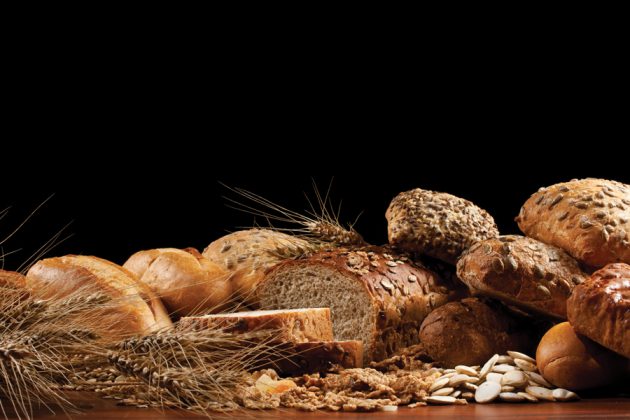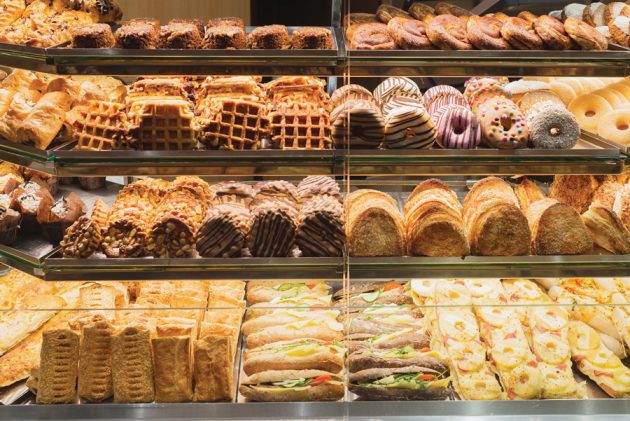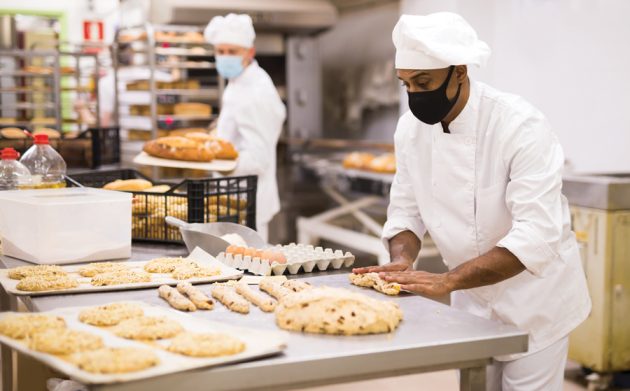
Innovation and brand distinction in baked goods
By Mark Juhasz
Food Trends Bake & Snack Food baking Editor pickHealthy, good and interesting: Which baked goods will lead in 2022?
 The strains of the ongoing pandemic may shift consumers from the practical and austere toward decadence. Photo © Grafvision / Adobe Stock
The strains of the ongoing pandemic may shift consumers from the practical and austere toward decadence. Photo © Grafvision / Adobe Stock Baked goods satiate, comfort, satisfy, and fill us. As a front-line source of sustenance, baked goods continue to inspire and express many of the hopes, concerns, worries and aspirations we seek in 2022. The past two years have been marked by surges in home baking, along with desire for convenience, health, and immunity.
After the pantry-loading attitudes and flour shortages of 2020, baked goods processors are reconsidering their product assortments. The largest category of ‘baked goods’ comprise bread, pastries, and sweet baked foods including cakes, with category sales rising nine per cent in 2020 (Food In Canada Industry Report, 2021). Leading baked category CPGs are simplifying production, questioning their inventories, rationalizing their SKU offerings, and improving their consumer responsiveness. According to Food Navigator, the strains of the ongoing pandemic may shift consumers from the practical and austere toward decadence, the extraordinary, and a celebration of holistic well-being, along with a much-needed dose of fun and adventure for our mental health in 2022.
Product development
Consumers want wholesome and healthy products than refined carbohydrates and sugars. People are seeking functional benefits in products, and their accompanied ingredients. Healthy digestion, gut microflora and stronger immune systems can be met in new fibre formulations, and with ingredients such as nut flours and dark chocolates. Some consumers will continue to seek products for specialized diets such as paleo, keto, vegan, and allergen-, grain-, and dairy-free (Food Navigator, Dec. 9, 2021). Baked goods that help strengthen immunity will also be supported.
Fruits, proteins, and high fibre content could mix with reishi, chaga, or other exotic mushrooms as novel ingredients in baked goods. Oats and whole grains remain popular, and in demand. Baked goods low in refined carbohydrates, trans- or saturated fats, sodium, and refined sugar, while higher in natural omega-3s, vitamins, minerals, and antioxidants resonate with leading health trends. Consumers are seeking reductions in the use of preservatives, fructose corn syrup and artificial sweeteners or synthetic ingredients (RJ Frometa, Sept 29, 2021, Vents Magazine).
Baked goods brands are experimenting and meeting all of these various consumer health trends in many ways. Nevada-based Nature’s Bakery is a maker of clean-label, plant-based, nut-free, and non-GMO soft baked goods, best known for its fig bar. Rule Breaker, an allergen-friendly snacks maker uses chickpeas as its ingredient in brownies that are high in protein and fibre while free from 11 allergens, including dairy, sesame eggs, soy, and wheat. Baked goods brand Stonemill Bakehouse, which has a facility in Langley, B.C., focuses on plant-based, dairy-free, non-GMO and sustainable baking. In 2020, it launched the Honest Wellness line of protein breads that are vegan with no added fat, dairy, or soy. In 2021, Voortman Super Grains launched a ‘better-for-you’ cookie and using real fruits and whole grains (Food In Canada Industry Report, 2021). The brand is expecting a 30 per cent annual growth rate. Consumer demand for healthy, natural, clean labels will continue strong in 2022. Embassy Ingredients has actually created a product line of Necol colours derived from plant pigments for a wide range of baking applications (Snack Food & Wholesale Bakery, Oct. 27, 2021).

Consumers are seeking functional benefits in products. Photo © Matousekfoto / Adobe Stock
Strong consumer demand for ethical, healthy, and, at times, animal-free ingredients has pressed brands to seek alternatives. Dairy and egg substitutes can come from wheat, soy, flax, or peas. However, replacing eggs’ varied functions in baking is challenging.
Manitoba-based Merit Functional Foods has created a line of Puratein canola plant proteins. These proteins are intended to serve as an egg-alternative for cakes, with functionalities including for whipping. Distinct diets, such as ketogenic, can be achieved with substitutes, such as stevia lead, chicory root fibre, cassava flour, coconut oil, flax seed, or rosemary extract. Desire for fibre fortification can come from new processing technologies and ingredients with multiple functions. The trend in upcycled foods and immunity can be found in Fiberstar’s Citri-fi, produced from the byproducts of citrus juice processing. Immunity can be enhanced with healthier plant and nut fats and oils. Companies such as Epogee have developed EPG oil (derived from rapeseed) to replace up to 85 per cent of the digestible fat in a formulation, with 92 per cent fewer calories (Brewster, IFT, Aug. 1, 2021).
Los Angeles-based Bougie Bakes has come onto the West Coast US market prominently in 2021 with the production and marketing of their direct-to-consumer bakery with an assortment of sugar-, dairy-, and gluten-free cookies, brownies, and muffins. The co-owners emphasize premium ingredients, such as pink Himalayan salt, and the use of eggs from pasture-raised hens. They use coconut oil instead of ghee, along with almond flour, plant-based collagen, and unsweetened vanilla macadamian milk. Their products are baked-to-order with no preservatives, and their range of distinct flavour and ingredient combinations include pumpkin pecan pies, peppermint brownies, and orange-cranberry muffins. With a nod to sustainability, they use tins that are reusable by their clientele (Watrous, July 12, 2021, Food Entrepreneur).
Brand values
While value for cost of product, safety, flavour, and health are important baked goods drivers, sustainability and brand ethics will remain a strong element in consumer concerns with their foods. The baked goods sector will seek to align with broader food sector’s goals to scale its positive impact and build consumer confidence. Packaging will remain an opportunity to differentiate a brand, as long as it is also safe and hygienic. Sustainability indicator labelling, such as soil regeneration, carbon neutrality, circularity, and the use of upcycled ingredients all have increasing currency with consumers (E. Schroeder, Oct 20, 2021, Baking Business). Upcycling may have a major breakthrough in 2022, and in the baked goods sector this may manifest with the use of used fruits, coffee grounds, or banana peels as natural flavourings. Partnership between farmers, millers and bakers for artisan goods will open possibilities for greater use of heirloom heritage grains to strengthen social value, minimize food waste, and provide greater social value in supply chains (M. Smith, Baking & Snack, Oct. 21, 2021).

Baked goods brands are experimenting and trying to meet the demand for clean label, healthy, and sustainable products. Photo © JackF / Adobe Stock
The joy of eating
Amidst the surging desire for good health, and a greater social sustainability conscience, simple indulgence through satisfying, comforting baked goods that inspire nostalgia and pleasure may really rise this year. Baking techniques from old cultural traditions could resonate with North American markets. Search for Calic bread, a Korean take on garlic, cheese and sourdough bread was up over 1,200 per cent in 2021, while people also sought flavours at once nostalgic, new and comforting, such as Smores Brownies or pancakes with distinct ingredients (Food Navigator, Dec 9, 2021). Consumers in 2022 may also gravitate toward the exotic and spicy, an escape to faraway lands, seeking the space between tried-and-true flavours and a desire to break from the monotony and extension of the pandemic with tastes such as blood orange, key lime and clementine, or exotic spices from Asia and the Americas. Baked goods providing consumers with indulgent flavours and aromas such as pizza, pasta, fries, cheese, and chocolates could find eager audiences (E. Crawford, Food Navigator, Dec 16, 2021).
This article was originally published in the February/March 2022 issue of Food in Canada.
Print this page